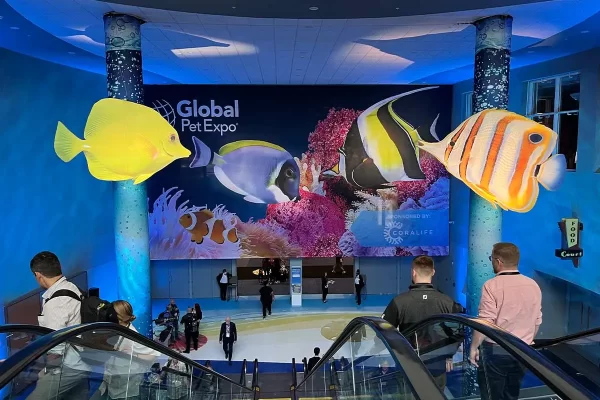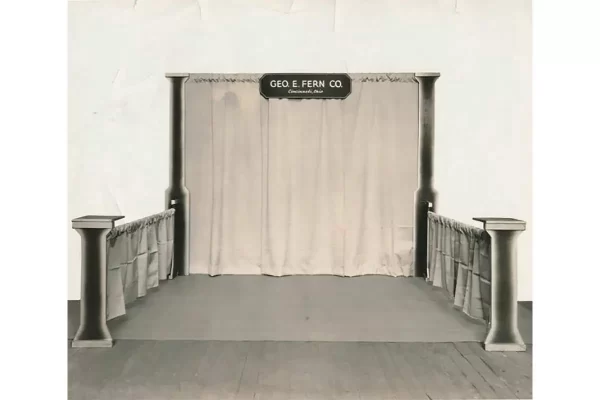The convention and tradeshow industry is among the largest waste producers, second only to the construction industry, generating 600,000 tons of garbage annually. It adds up quickly, all those unread brochures and useless plastic swag destined for a landfill. Each of the 60,000,000 million worldwide attending a consumer or industry tradeshow produces, on average, 20 pounds of garbage, totaling more than 1 billion pounds annually.
Under the weight of all the garbage, things are beginning to change. As sustainability issues become a core value for more companies, the convention industry that serves them follows suit.
Paper and plastic ephemera is the most obvious first line of attack on reducing that yearly billion-pound mountain of waste. White sheets and brochures for exhibitors’ products and services are increasingly offered electronically while participants navigate their tradeshow experience with a mobile app built for the show – design and build one app or hand out 10,000 maps. The advantage is clear. Even the displays are potentially greener, with companies offering eco-friendly booths made from recycled material for purchase or rent.
—Event Industry Council
An Event Industry Task Force found three areas most concerning for advocates of sustainability:
- Carbon: The largest environmental impact comes from greenhouse gas (GHG) emissions from participant transport, venue energy, and general service contractor (GSC) warehouse-to-venue logistics.
- Next is waste, primarily from venues (including show floor waste, catering, and other waste generated during shows) and GSC warehouses supplying and building many materials and booths at events. Plastic waste and food waste were investigated as well.
- Finally, booth construction is the most difficult to measure; given the fragmentation of the supply chain and the disruptions of the pandemic, there is a significant environmental impact, as choices here not only contribute to waste but also have an impact on climate change, natural resources, and labor. Although there is significant recycling of many materials, some currently only have limited potential for re-use. That includes carpet, which represents the largest proportion of waste material.
Where do we start?
Maybe with Nicole Klein, now principal at Exhibit Expressions, who was part of the early awareness of the need for sustainability but found price resistance. “I started to tune into using the most sustainable materials possible while building a display for one of our clients at the Greenbuild Expo in 2008. We were asked to create unique elements using materials containing at least 70% recycled and recyclable content and provide a sustainability statement. Unfortunately, the crash happened soon after, and the sustainability momentum was lost.”
“When my father invented Highmark TechSystems,” says Debbie Parrott, president of Highmark, “he wanted the structures to be infinitely reusable, but he also wanted them manufactured in the US to reduce greenhouse gas involved in transportation since most of the more sophisticated systems were manufactured in Europe.”
Al Mercuro of Genesis Exhibits, who has been searching for sustainable exhibit solutions, was excited about DS&L’s VELCRO® Brand LOGISTRAP®, which is reusable and can replace shrink wrap. When I spoke to Rob Cohen of DS&L, he explained LOGISTRAP® can be used in warehouses or in transporting palletized goods to secure loads. The product is available in various lengths and has been tested to be reused a minimum of 1,000 times. On the lighting side, Rob points out that DS&L continues to stay at the forefront of the LED world to deliver sustainable lighting solutions. This means pushing LED technology to deliver the most light output possible best while drawing the least amount of energy.
What to do about CARPET?
“Our new initiative represents a bold commitment to environmental stewardship and innovation,” said James Zacharias, Division President at Brumark. “We are proud to pioneer a solution that not only diverts carpet waste from landfills but also contributes to creating sustainable fuel alternatives.” Brumark is reducing the environmental footprint of carpet disposal by converting carpet into fuel. Alternative fuels are renewable and environmentally friendly sources that offer a sustainable alternative to coal and other traditional fuels. Using alternative fuels helps mitigate carbon emissions, contributing to efforts to combat climate change and promote a cleaner, greener future.
Alex Hill Vice President, Vice President, Experiential Solutions Taylor Visual Impressions (formerly Optima), shared his company’s Preserving Earth x Taylor (PExT), a series of programs, technologies, and business practices offering their customers sustainable products, operations, design, and packaging. They provide a more environmentally conscious way to use signage, embracing recycled fabrics as a standard offering for signs and graphics products. Taylor offers a closed-loop recycling program for fabric and rigid graphics.
Glenda Brungardt, now an industry consultant after 46 years managing HP’s exhibit program, has put together her list of pros and cons for carpeting:
Pros:
- Carpet and flooring provide a comfortable and safe surface for attendees to walk on, reducing fatigue and the risk of slips and falls .
- Well-designed carpet and flooring can enhance the overall look and feel of a booth and the event space.
- Noise Reduction: Carpeting can help absorb sound, reducing noise levels within the event space.
- Some carpet and flooring options are designed for multiple uses, allowing for reusability across different events and reducing overall material consumption and waste.
- Choose carpets and flooring made from recyclable or recycled materials to support sustainable practices.
- Carpet traps airborne pollutants and keeps four times more pollutants out of the breathing zone.
- Carpets vacuumed daily remove more airborne pollutants than hard surface.
- Carpets can also be safely vacuumed with attendees present; however, hard surfaces present a challenge when being cleaned with attendees present.
- Carpets hide the crappy concrete floors in the convention center.
Cons:
- Waste Generation: Flooring and carpets can contribute to waste generation, especially if they are single-use and not recyclable.
- Some carpet materials may not be biodegradable, contributing to environmental challenges if not disposed of properly.
- To understand its environmental impact, we MUST consider the overall lifecycle of the flooring material, from production to disposal.
- Reuse and Recycling: Opt for materials that can be reused across multiple events or recycled at the end of their life cycle.
- Consider overall costs from installation to transporting to storage to labor costs.
- Hard surfaces, when being cleaned properly, can create a slipping hazard — why do you think all those bathroom floor signs are placed when cleaning?
- Carpet left behind by the exhibitor is what generates waste — one and done is not a good approach, just like “build and burn” of a booth property is not a good approach.
The bottom line is that aisle carpet and booth flooring provide benefits, but we need to figure out how to be more sustainable in our choices.
TO BE CONTINUED
This article has been split in two, for the second half please check back Monday. This story originally appeared in the Q2 2024 issue of Exhibit City News, p. 40. For original layout or to read the full story, visit https://issuu.com/exhibitcitynews/docs/ecn_q1_2024.































